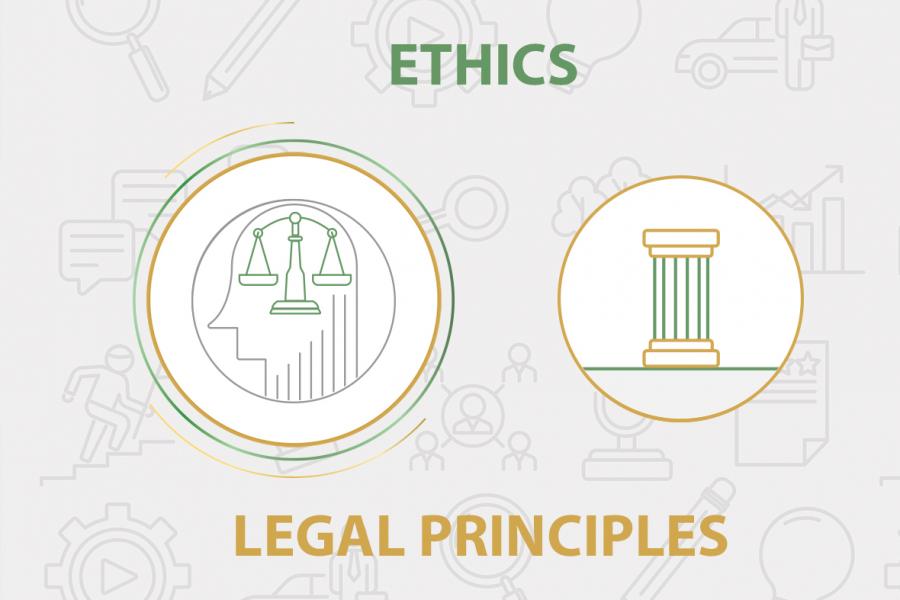 Ethical Behaviour -Disclosure of information
Ethical Behaviour -Disclosure of information
Legal principles regarding disclosure of information.
Ethical Behaviour - Disclosure of information
Introduction
Practitioners take privacy very seriously and confidentiality is a central part of the code of ethics. Practitioners understand that for people to feel comfortable talking about private and revealing information, they need to see the practitioner's office as a place where they can talk about anything they like, without fear of that information leaving the room.
During your first visit, the practitioner explains your privacy rights and his or her policies regarding how your personal information will be handled. The practitioner's policies will also explain in which instances the client's personal information might have to be shared.
Case study
Steve has been working for SA Timber for five years on contract. For the past four years, his contract was renewed annually. Steve worked hard and people relied on his ability to deliver. Steve had been having some personal problems for the past year and this resulted in him becoming aggressive at work.
His colleagues had reported that it was becoming difficult to work with him because he was explosive when things did not go his way. Human Resources (HR) referred Steve to the Career Development practitioner, Tammy, because they had decided not to renew Steve's contract this year.
HR had suggested that Tammy assist Steve on a career path and options outside of SA Timber. Steve meets with Tammy and she notes that he is really down. He barely responds at first and then starts talking about being a failure. Tammy knows that Steve needs to see a psychologist or psychiatrist to deal with this issue. Tammy gently suggests this to Steve and he becomes aggressive, saying that he will be waiting in the car park with his gun to "sort out the people who got rid of him". He storms out of the office and the building.
Tammy immediately calls HR to inform them of Steve's intent to harm co-workers who he thinks were responsible for his contract not being renewed.
From the case study above, Tammy broke confidentiality rules. Why do you think she did this?
- Not sending any revealing information via voicemail or text.
- Not discussing or mentioning to third parties that a client has an appointment with you.
- Not discussing the contents of a session with a third party without the permission of the client.
- Career development practitioners inform clients orally or in writing of the purposes, goals, techniques, policies and ethical standards under which career development and vocational guidance are provided; considering conditions in which consultation with other professionals might occur, and legal or policy constraints which relate to how services are provided.
- Any limits on confidentiality set by others will be discussed with the client before proceeding to put her/him in a position to choose their level of involvement and personal responses to such limits. Written informed consent (for clients over the age of 16 and competent to participate independently) and/or assent (for clients under the age of 16 and/or not competent to participate independently) forms must be signed by clients for all services, stating that they have been informed of their rights and that they consent/assent to the preconditions of the service.
- Disclosure of confidential information may happen when a court order is provided. Disclosure of confidential information under other circumstances such as to assist clients with services from other professionals, or when any information can be harmful to the client or to others, must be with the clients expressed written permission. In all instances, clients must be informed beforehand of the circumstances around releasing confidential information and provide their expressed consent/assent thereto. Confidentiality must be upheld during any form of electronic recording via video, photographs, or over the internet and clients must provide written informed consent/assent to these recordings. Career development practitioners must inform themselves and be familiar with and ensure that they adhere to the principles stipulated in the Protection of Personal Information Act, No 4 of 2013 regarding the handling of clients' information.
Shared under a Creative Commons Attribution-NonCommercial-NoDerivatives 2.0 South Africa (CC BY-NC-ND 2.0 ZA)
This means you can share and adapt this work but not for commercial purposes. You will only need to include the following reference to the original content in all shared works.
Kindly attribute as follows:
Beukes, C. J., Mahadave, K., & Kanhai, K. (2022). Professional Development Portfolio for Career Development Practitioners (1st ed.). CC BY-NC-SA 2.0 ZA, https://creativecommons.org/licenses/by-nc-nd/2.0/za/
Authors
![]() Karuna Mahadave
Karuna Mahadave
![]() Christopher John Beukes
Christopher John Beukes

You can earn 1.00 CPD point/s by completing and passing the self-assessment questionnaire for this article.
1.00